Workshop Report: Catalyzing Knowledge-Driven Discovery in Environmental Health Sciences through a Harmonized Language
Abstract
1. Introduction
- Create a central space to engage the diversity of expertise in the environmental health community around harmonized language.
- Raise awareness of efforts that exist related to harmonizing language to reduce redundancy and promote the adoption of existing tools and approaches.
- Identify opportunities within those efforts to extend them to meet new needs or uses.
- Seek synergies across existing efforts to maximize their benefit.
- Promote the EHS community’s involvement in developing new standards/recommendations, especially in areas that are EHS-adjacent (e.g., earth sciences, ecology, clinical, behavioral sciences).
- Pinpoint gaps that need solutions and facilitate the development of solutions to address those gaps.
2. Methods: Workshop Overview
- Developing Sustainable Language Solutions: Identify use cases in EHS research and begin specifying semantic needs, gaps, and strategies for developing and implementing solutions.
- Building a Sustainable Community: As the Collaborative is intended to be a community-driven initiative, three workshop sessions were dedicated to start the process of attaining agreement on the proposed EHLC purpose, community model, and strategy to build a sustainable and impactful community.
- Review the workshop booklet [28]. Attendees were asked to reflect on the Questions to Ponder as well as become familiar with semantic terms and concepts.
- Read through the use-case profiles and prepare to participate in the use-case “work-a-thon” sessions.
- View pre-workshop webinars, The Value of Creating Language and Community in Catalyzing Knowledge-Driven Discovery in Environmental Health Research (June) [29] and A Primer on Using Terminologies, Vocabularies, and Ontologies for Knowledge Organization (July) [30]. June’s webinar addressed the value of language and community and raised awareness of the Collaborative, to begin collecting community input. July’s webinar explained the differences between a taxonomy, a thesaurus, and an ontology, where to find ontologies, and when and how to use them.
3. Theme 1: Developing Sustainable Language Solutions
3.1. Goals of the Theme
- Identify use cases in which the community felt the development or adoption of a harmonized language, including terminologies, ontologies, common data elements, and supporting tools, was needed.
- Gather information on use cases of interest to the community and the willingness of community members to participate in use-case working groups (WGs).
- Make progress on use cases identified in the prior year and develop action plans for continuing the work post-workshop.
3.2. Value of Use Cases
- Terminology and ontology gaps that impede research goals.
- Challenges in advancing harmonized languages.
- Opportunities for advancing the creation and adoption of terminologies and ontologies.
3.3. Development of Use Cases
3.4. Use Case: Discovery of Exposure Data
3.4.1. Background
- Searching for existing data and identify gaps.
- Screening data for relevance and curate to add context.
- Integrating information.
3.4.2. Workshop Discussion
3.4.3. Results: Future Directions for This Use Case
3.5. Use Case: Place-Based Exposures
3.5.1. Background
3.5.2. Workshop Discussion
3.5.3. Results: Future Directions for This Use Case
3.6. Use Case: Integration of Exposure Data
3.6.1. Background
3.6.2. Workshop Discussion
- Methods and best practices for reporting machine-readable data and metadata.
- Standards for reporting, including templates to report information in a common format.
- Standardized structures for reporting metadata that include requiring metadata to be reported at both the study level and the variable level.
3.6.3. Results: Future Directions for This Use Case
- Developing initial lists/templates of standard structured metadata for various environmental health studies. The guiding principles include being modular, extensible, and lightweight; having different templates for different studies; and including required variables and desired variables. Importantly, elements should be linked to ontological terms.
- Performing landscape/mapping analysis of desired variables to existing ontologies.
3.7. Use Case: Bridging Exposure and Biomarkers of Exposure
3.7.1. Background
3.7.2. Workshop Discussion
3.7.3. Results: Future Directions for This Use Case
- Absence of methods to annotate/link laboratory data with ontologies.
- Uncertainty around what numerical or statistical models are needed to analyze the data.
- Unknown or unidentified biomarkers.
- Difficulty in developing examples that include all important aspects of biomarkers.
- Uncertainty around how to disseminate complex results, especially concerning omics data.
3.8. Additional MURAL Brainstorming: Gaps and Areas for Research
4. Theme 2: Building a Sustainable Community
4.1. Goals and Objectives of the Theme
- Explore community interest in contributing to a collaborative effort.
- Determine the model for forming and sustaining a collaborative effort.
- Building on the goals, the objectives of the workshop were to:
- Develop an endorsed mission and vision statements for the Collaborative.
- Discuss challenges for the Collaborative as well as ideas for defining and ensuring success for the Collaborative.
- Present and discuss a proposed community model for the Collaborative, consider alternative models, and reach an endorsed model with which to move forward.
- Discuss and develop ideas for how the community model will work in practice and be sustained in the long term.
4.2. Strategic Elements—Vision, Mission, Goals, and Roles
4.3. Community Model
- If RDA is to play a role, there is a need for significant awareness-raising within the EHS community about RDA. A Zoom poll of the workshop attendees indicated that 23% had not heard of RDA and 40% had heard of RDA but were not familiar with what it does.
- There is concern regarding potential need to pay for RDA membership.
- There is a need to ensure the community structure engages diverse practitioners, stakeholders, end users, etc.
4.4. Building and Sustaining the Community
5. Results and Discussion
- Identify a “Use-Case Champion”, a self-identified expert volunteer, to lead the group as a unique way to encourage both community participation and buy-in.
- Coordinate initiatives across use cases to prevent duplication and promote synergy.
- Define a clear scope to ensure outcomes are well-defined and reasonable.
- Work with large studies and datasets that can help increase adoption.
- Understand the needs and perspectives of the stakeholders, e.g., analysts, modelers, data generators, and developers.
- Reach out to the community to capture translational applications.
- Ensure transdisciplinary representation and relevant subject matter expertise are reflected in the use cases.
- Build on existing frameworks (e.g., AOPs, OBO) and ensure positive alignment with other standards-related efforts.
- Understand where artificial intelligence and machine learning (AI/ML) approaches may help in harmonizing different languages.
6. Conclusions
- Move the field toward community-endorsed best practices.
- Break down current silos, support a common infrastructure, and interconnect data-resource ecosystems.
- Leverage existing ontologies (HHEAR, ENVO, ECTO, EXO, etc.) as well as advance new semantic approaches when needed.
- Promote best practices in data management and sharing, such as FAIR principles.
- Catalyze knowledge-driven discovery by facilitating AI/ML approaches—fully AI ready.
Supplementary Materials
Author Contributions
Funding
Institutional Review Board Statement
Informed Consent Statement
Data Availability Statement
Acknowledgments
Conflicts of Interest
References
- Wilkinson, M.D.; Dumontier, M.; Aalbersberg, I.J.; Appleton, G.; Axton, M.; Baak, A.; Blomberg, N.; Boiten, J.W.; da Silva Santos, L.B.; Bourne, P.E.; et al. The FAIR guiding principles for scientific data management and stewardship. Sci. Data 2016, 3, 160018. [Google Scholar] [CrossRef] [PubMed]
- Ontology for Biomedical Investigations (OBI). The Ontology for Biomedical Investigations. 2016. Available online: http://obi-ontology.org/ (accessed on 31 July 2022).
- Brazma, A.; Hingamp, P.; Quackenbush, J.; Sherlock, G.; Spellman, P.; Stoeckert, C.; Aach, J.; Ansorge, W.; Ball, C.A.; Causton, H.C.; et al. Minimum information about a microarray experiment (MIAME)-toward standards for microarray data. Nat. Genet. 2001, 29, 365–371. [Google Scholar] [CrossRef] [PubMed]
- Lawson, C.L.; Berman, H.M.; Chiu, W. Evolving data standards for cryo-EM structures. Struct. Dyn. 2020, 7, 014701. [Google Scholar] [CrossRef] [PubMed]
- Overhage, J.; Ryan, P.; Reich, C.; Hartzema, A.; Stang, P. Validation of a common data model for active safety surveillance research. J. Am. Med. Inform. Assoc. 2012, 19, 54–60. [Google Scholar] [CrossRef] [PubMed]
- Spidlen, J.; Gentleman, R.C.; Haaland, P.D.; Langille, M.; Le Meur, N.; Ochs, M.F.; Schmitt, C.; Smith, C.A.; Treister, A.S.; Brinkman, R.R. Data standards for flow cytometry. OMICS A J. Integr. Biol. 2006, 10, 209–214. [Google Scholar] [CrossRef] [PubMed]
- McDougal, R.A.; Dalal, I.; Morse, T.M.; Shepherd, G.M. Automated metadata suggestion during repository submission. Neuroinformatics 2019, 17, 361–371. [Google Scholar] [CrossRef]
- Musen, M.A.; Bean, C.A.; Cheung, K.H.; Dumontier, M.; Durante, K.A.; Gevaert, O.; Gonzalez-Beltran, A.; Khatri, P.; Kleinstein, S.H.; O’Connor, M.J.; et al. The center for expanded data annotation and retrieval. J. Am. Med. Inform. Assoc. 2015, 22, 1148–1152. [Google Scholar] [CrossRef]
- Sansone, S.A.; Rocca-Serra, P.; Field, D.; Maguire, E.; Taylor, C.; Hofmann, O.; Fang, H.; Neumann, S.; Tong, W.; Amaral-Zettler, L.; et al. Toward interoperable bioscience data. Nat. Genet. 2012, 44, 121–126. [Google Scholar] [CrossRef]
- Crum, J.A.; Cooper, I.D. Emerging roles for biomedical librarians: A survey of current practice, challenges, and changes. J. Med. Libr. Assoc. 2013, 101, 278–286. [Google Scholar] [CrossRef]
- Gu, W.; Hasan, S.; Rocca-Serra, P.; Satagopam, V. Road to effective data curation for translational research. Drug Discov. Today 2021, 26, 626–630. [Google Scholar] [CrossRef]
- Heidorn, B.; Palmer, C.; Cragin, M.; Smith, L. Data Curation Education and Biological Information Specialists; Global Biodiversity Information Facility: Copenhagan, Denmark, 2007; Volume 4, Available online: http://www.gbif.org (accessed on 31 July 2022).
- Johnston, L.; Carlson, J.; Hudson-Vitale, C.; Imker, H.; Kozlowski, W.; Olendorf, R.; Stewart, C.; Blake, M.; Herndon, J.; McGeary, T.; et al. Data curation network: A cross-institutional staffing model for curating research data. Int. J. Dig. Curation 2018, 13, 125–140. [Google Scholar] [CrossRef]
- Palmer, C.; Heidorn, P.; Wright, D.; Cragin, M. Graduate Curriculum for Biological Information Specialists: A Key to Integration of Scale in Biology; Pennsylvania State University: University Park, PA, USA, 2007; Available online: https://citeseerx.ist.psu.edu/viewdoc/summary?doi=10.1.1.564.7242 (accessed on 31 July 2022).
- Manrai, A.K.; Cui, Y.; Bushel, P.R.; Hall, M.; Karakitsios, S.; Mattingly, C.J.; Ritchie, M.; Schmitt, C.; Sarigiannis, D.A.; Thomas, D.C.; et al. Informatics and data analytics to support exposome-based discovery for public health. Annu. Rev. Public Health 2017, 38, 279–294. [Google Scholar] [CrossRef] [PubMed]
- Mattingly, C.J.; Boyles, R.; Lawler, C.P.; Haugen, A.C.; Dearry, A.; Haendel, M. Laying a community-based foundation for data-driven semantic standards in environmental health sciences. Environ. Health Perspect. 2016, 124, 1136–1140. [Google Scholar] [CrossRef] [PubMed]
- Thessen, A.E.; Grondin, C.J.; Kulkarni, R.D.; Brander, S.; Truong, L.; Vasilevsky, N.A.; Callahan, T.J.; Chan, L.E.; Westra, B.; Willis, M.; et al. Community approaches for integrating environmental exposures into human models of disease. Environ. Health Perspect. 2020, 128, 125002. [Google Scholar] [CrossRef] [PubMed]
- National Center for Biotechnology Information (NCBI). PubMed; National Library of Medicine: Bethesda, MD, USA, 2022. Available online: https://pubmed.ncbi.nlm.nih.gov/ (accessed on 31 July 2022).
- Biomedical Data Translator Consortium (BDTC). Toward a universal biomedical data translator. Clin. Transl. Sci. 2019, 12, 86–90. [Google Scholar] [CrossRef]
- Whaley, P.; Edwards, S.W.; Kraft, A.; Nyhan, K.; Shapiro, A.; Watford, S.; Wattam, S.; Wolffe, T.; Angrish, M. Knowledge organization systems for systematic chemical assessments. Environ. Health Perspect. 2020, 128, 125001. [Google Scholar] [CrossRef]
- Mungall, C.J.; McMurry, J.A.; Köhler, S.; Balhoff, J.P.; Borromeo, C.; Brush, M.; Carbon, S.; Conlin, T.; Dunn, N.; Engelstad, M.; et al. The Monarch Initiative: An integrative data and analytic platform connecting phenotypes to genotypes across species. Nucleic Acids Res. 2017, 45, D712–D722. [Google Scholar] [CrossRef]
- Callahan, T.; Baumgartner, W.; Bada, M.; Stefanski, A.; Tripodi, I.; White, E.; Hunter, L. OWL-NETS: Transforming OWL representations for improved network inference. Biocomputing 2017, 133–144. [Google Scholar] [CrossRef]
- Choi, W.; Lee, W. Inference of biomedical relations among chemicals, genes, diseases, and symptoms using knowledge representation learning. IEEE Access 2019, 7, 179373–179384. [Google Scholar] [CrossRef]
- Krämer, A.; Green, J.; Pollard, J., Jr.; Tugendreich, S. Causal analysis approaches in Ingenuity Pathway Analysis. Bioinformatics 2014, 30, 523–530. [Google Scholar] [CrossRef]
- Kanehisa, M.; Sato, Y. KEGG Mapper for inferring cellular functions from protein sequences. Protein Sci. 2020, 29, 28–35. [Google Scholar] [CrossRef] [PubMed]
- Wild, C.P. The exposome: From concept to utility. Int. J. Epidemiol. 2012, 41, 24–32. [Google Scholar] [CrossRef] [PubMed]
- National Institute of Environmental Health Sciences (NIEHS). Workshop Recordings; National Institute of Environmental Health Sciences: Research Triangle Park, NC, USA, 2021. Available online: https://www.niehs.nih.gov/news/events/pastmtg/2021/ehslanguage/descriptions/index.cfm#a924516 (accessed on 31 July 2022).
- Environmental Health Language Collaborative (EHLC). Catalyzing Knowledge-Driven Discovery in Environmental Health Sciences Through a Harmonized Language, Virtual Workshop, September 9–10; National Institute of Environmental Health Sciences: Research Triangle Park, NC, USA, 2021; pp. 1–29. Available online: https://www.niehs.nih.gov/news/events/pastmtg/2021/ehslanguage/ehslanguage_2021_booklet_508.pdf (accessed on 31 July 2022).
- National Institute of Environmental Health Sciences (NIEHS). The Value of Creating Language and Community in Catalyzing Knowledge-Driven Discovery in Environmental Health Research: Virtual Pre-Workshop; National Institute of Environmental Health Sciences: Research Triangle Park, NC, USA, 2021. Available online: https://www.niehs.nih.gov/news/video/science/index.cfm?video=919591&numVideos=1 (accessed on 31 July 2022).
- Environmental Health Language Collaborative (EHLC). A Primer on Using Terminologies, Vocabularies, and Ontologies for Environmental Health Knowledge Organization; National Health of Environmental Health Sciences: Research Triangle Park, NC, USA, 2021. Available online: https://www.niehs.nih.gov/news/video/science/index.cfm?video=919859&numVideos=1 (accessed on 31 July 2022).
- Mungall, C. Simple Standard for Sharing Ontology Mappings (SSSOM) Documentation, Release 0.0.1; 2021; pp. 1–24. Available online: https://sssom-py.readthedocs.io/_/downloads/en/latest/pdf/ (accessed on 31 July 2022).
- Jackson, R.; Matentzoglu, N.; Overton, J.A.; Vita, R.; Balhoff, J.P.; Buttigieg, P.L.; Carbon, S.; Courtot, M.; Diehl, A.D.; Dooley, D.M.; et al. OBO Foundry in 2021: Principles to evaluate ontologies. Database 2021, 2021, baab069. [Google Scholar] [CrossRef] [PubMed]
- Earth Science Information Partners (ESIPFed). README.md: Official Respository for Semantic Web for Earth and Environmental Terminology (SWEET) Ontologies; GitHub Inc: San Francisco, CA, USA, 2022; Available online: https://github.com/ESIPFed/sweet/blob/master/README.md (accessed on 31 July 2022).
- Toxin and Toxin Target Database (T3DB). Toxin and Toxin Target Database (T3DB). 2022. Available online: http://www.t3db.ca/ (accessed on 31 July 2022).
- Health Level Seven International (HL7 International). Gravity Project; Health Level Seven International: Ann Arbor, MI, USA, 2022; Available online: https://www.hl7.org/gravity (accessed on 31 July 2022).
- N3C. Social Determinants of Health (SDoH): NCATS N3C Data Enclave; National Center for Advancing Translational Sciences (NCATS): Bethesda, MD, USA, 2022. Available online: https://covid.cd2h.org/social-determinants (accessed on 31 July 2022).
- National Center for Advancing Translational Sciences (NCATS). Biomedical Data Translator: ICEES; National Center for Advancing Translational Sciences: Bethesda, MD, USA, 2016. Available online: https://researchsoftwareinstitute.github.io/data-translator/apps/icees (accessed on 31 July 2022).
- The OBO Foundry. The Open Biological and Biomedical Ontology (OBO) Foundry: Community Development of Interoperable Ontologies for the Biological Sciences. 2022. Available online: https://obofoundry.org/ (accessed on 31 July 2022).
- Observational Health Data Sciences and Informatics (OHDSI). OHDSI Homepage; Observational Health Data Sciences and Informatics: New York, NY, USA, 2022; Available online: https://www.ohdsi.org/ (accessed on 31 July 2022).
- The Canadian Urban Environmental Health Research Consortium (CANUE). CANUE Homepage; The Canadian Urban Environmental Health Research Consortium: Toronto, ON, Canada, 2018; Available online: https://canue.ca/ (accessed on 31 July 2022).
- Human Health Exposure Analysis Resource (HHEAR). HHEAR Homepage; National Institute of Environmental Health Sciences: Research Triangle Park, NC, USA, 2019. Available online: https://hhearprogram.org/ (accessed on 31 July 2022).
- National Institutes of Health (NIH). Environmental Influences on Child Health Outcomes (ECHO) Program; U.S. Department of Health and Human Services, National Institutes of Health: Bethesda, MD, USA, 2016. Available online: https://www.nih.gov/research-training/environmental-influences-child-health-outcomes-echo-program (accessed on 31 July 2022).
- National Center for Advancing Translational Sciences (NCATS). Clinical and Translational Science Awards (CTSA) Program; National Center for Advancing Translational Sciences: Bethesda, MD, USA, 2022. Available online: https://ncats.nih.gov/ctsa/ (accessed on 31 July 2022).
- Environmental Health Perspectives (EHP). EHP Homepage; National Institute of Environmental Health Sciences: Research Triangle Park, NC, USA, 2022. Available online: https://ehp.niehs.nih.gov/ (accessed on 31 July 2022).
- Ankley, G.T.; Bennett, R.S.; Erickson, R.J.; Hoff, D.J.; Hornung, M.W.; Johnson, R.D.; Mount, D.R.; Nichols, J.W.; Russom, C.L.; Schmieder, P.K.; et al. Adverse outcome pathways: A conceptual framework to support ecotoxicology research and risk assessment. Environ. Toxicol. Chem. 2010, 29, 730–741. [Google Scholar] [CrossRef]
- AOP-Wiki. Adverse Outcome Pathway Wiki (AOP-Wiki). 2022. Available online: https://aopwiki.org/ (accessed on 31 July 2022).
- Organisation for Economic Co-operation and Development (OECD). OECD Homepage; Organisation for Economic Co-Operation and Development: Paris, France, 2022; Available online: https://www.oecd.org/ (accessed on 31 July 2022).
- Comparative Toxicogenomics Database (CTD). CTD Homepage, Revision 16888M; North Carolina State University: Raleigh, NC, USA, 2022; Available online: http://ctdbase.com/ (accessed on 31 July 2022).
- U.S. Environmental Protection Agency (EPA). Risk Assessment: Health Assessment Workspace Collaborative (HAWC); U.S. Environmental Protection Agency: Washington, DC, USA, 2022. Available online: https://www.epa.gov/risk/health-assessment-workspace-collaborative-hawc (accessed on 31 July 2022).
- Integrated Chemical Environment: (ICE). Integrated Chemical Environment: ICE; U.S. Department of Health and Human Services, Nationional Toxicology Program, National Institute of Environmental Health Sciences: Research Triangle Park, NC, USA, 2017. Available online: https://ntp.niehs.nih.gov/whatwestudy/niceatm/comptox/ct-ice/ice.html (accessed on 31 July 2022).
- U.S. Environmental Protection Agency (EPA). ToxRefDB Homepage; U.S. Environmental Protection Agency: Washington, DC, USA, 2010. Available online: https://cfpub.epa.gov/si/si_public_record_report.cfm?Lab=NCCT&dirEntryId=227139 (accessed on 31 July 2022).
- Python Software Foundation (PSF). Python Homepage; Python Software Foundation: Wilmington, DE, USA, 2022; Available online: https://www.python.org/ (accessed on 31 July 2022).
- SPARQL 1.1 Query Language; W3C: Cambridge, MA, USA, 2013; Available online: https://www.w3.org/TR/sparql11-query/ (accessed on 31 July 2022).
- ISO/IEC 9075-1:2016; Information technology—Database languages—SQL—Part 1: Framework (SQL/Framework). ISO: Geneva, Switzerland, 2016. Available online: https://www.iso.org/standard/63555.html (accessed on 31 July 2022).
- EarthCube. Cross-Domain Observational Metadata Environmental Sensing Network: X-DOMES; National Science Foundation: Alexandria, VA, USA, 2022. Available online: https://earthcube.sdsc.edu/group/x-domes#main-content (accessed on 31 July 2022).
- Bulgogi. Adverse Outcome Pathway Ontology (AOP Ontology); Github, Inc: San Francisco, CA, USA, 2015; Available online: https://github.com/DataSciBurgoon/aop-ontology#readme (accessed on 31 July 2022).
- Bioassay Ontology (BAO). BAO Homepage. 2022. Available online: http://bioassayontology.org/ (accessed on 31 July 2022).
- The Environment Ontology (ENVO). The Environment Ontology (ENVO). 2013. Available online: https://sites.google.com/site/environmentontology/ (accessed on 31 July 2022).
- Bioportal. Exposure Ontology (EXO); Stanford University, Center for Biomedical Informatics Research: Stanford, CA, USA, 2021; Available online: https://bioportal.bioontology.org/ontologies/EXO (accessed on 31 July 2022).
- Medical Subject Headings (MeSH). Medical Subject Headings (MeSH); National Library of Medicine: Bethesda, MD, USA, 2022. Available online: https://www.nlm.nih.gov/mesh/meshhome.html (accessed on 31 July 2022).
- Unified Code for Units of Measure (UCUM). UCUM Website; National Library of Medicine: Bethesda, MD, USA, 2022. Available online: https://ucum.nlm.nih.gov/ (accessed on 31 July 2022).
- Unified Medical Language System (UMLS). UMLS Website. 2022. Available online: https://www.nlm.nih.gov/research/umls/index.html (accessed on 31 July 2022).
- Bioportal. Bioportal Homepage; Board of Trustees of Leland Stanford Junior University: Stanford, CA, USA, 2022; Available online: https://bioportal.bioontology.org/ (accessed on 31 July 2022).
- Ontobee. Ontobee Homepage; University of Michigan Medical School: Ann Arbor, MI, USA, 2022; Available online: https://ontobee.org/ (accessed on 31 July 2022).
- Python Software Foundation (PSF). ChemListem 0.1.0; Python Software Foundation: Wilmington, DE, USA, 2018; Available online: https://pypi.org/project/ChemListem/ (accessed on 31 July 2022).
- EarthSoft. EQuIS Homepage; EarthSoft: Pensacola, FL, USA, 2021; Available online: https://earthsoft.com/products/professional/ (accessed on 31 July 2022).
- MedCaT. Welcome at MedCaT Homepage; MedCaT: Klazienaveen, The Netherlands, 2000; Available online: https://medcat.nl/EU/index (accessed on 31 July 2022).
- PubTator. PubTator Homepage; U.S. National Library of Medicine: Bethesda, MD, USA, 2019. Available online: https://www.ncbi.nlm.nih.gov/research/pubtator/ (accessed on 31 July 2022).
- Research Data Alliance (RDA). RDA Homepage; Research Data Alliance Foundation: Oxfordshire, UK, 2013; Available online: https://www.rd-alliance.org/contact (accessed on 31 July 2022).
- Organisation for Economic Co-Operation and Development (OECD). The Adverse Outcome Pathways Development Programme Workplan; Organisation for Economic Co-Operation and Development: Paris, France, 2022; Available online: https://www.oecd.org/chemicalsafety/testing/projects-adverse-outcome-pathways.htm (accessed on 31 July 2022).
- McMurry, J. Recording Available: Knowledge Bases as a Tool to Understand the Intersection of Genes, Phenotypes, and Environment; National Institute of Environmental Health Sciences, Environmental Health Language Collaborative: Research Triangle Park, NC, USA, 2021. Available online: https://www.youtube.com/watch?v=TIZMxVgne74&list=PLlo0xQLFI54HwrIluehIfEM-fNc2dUD5o&index=10 (accessed on 31 July 2022).
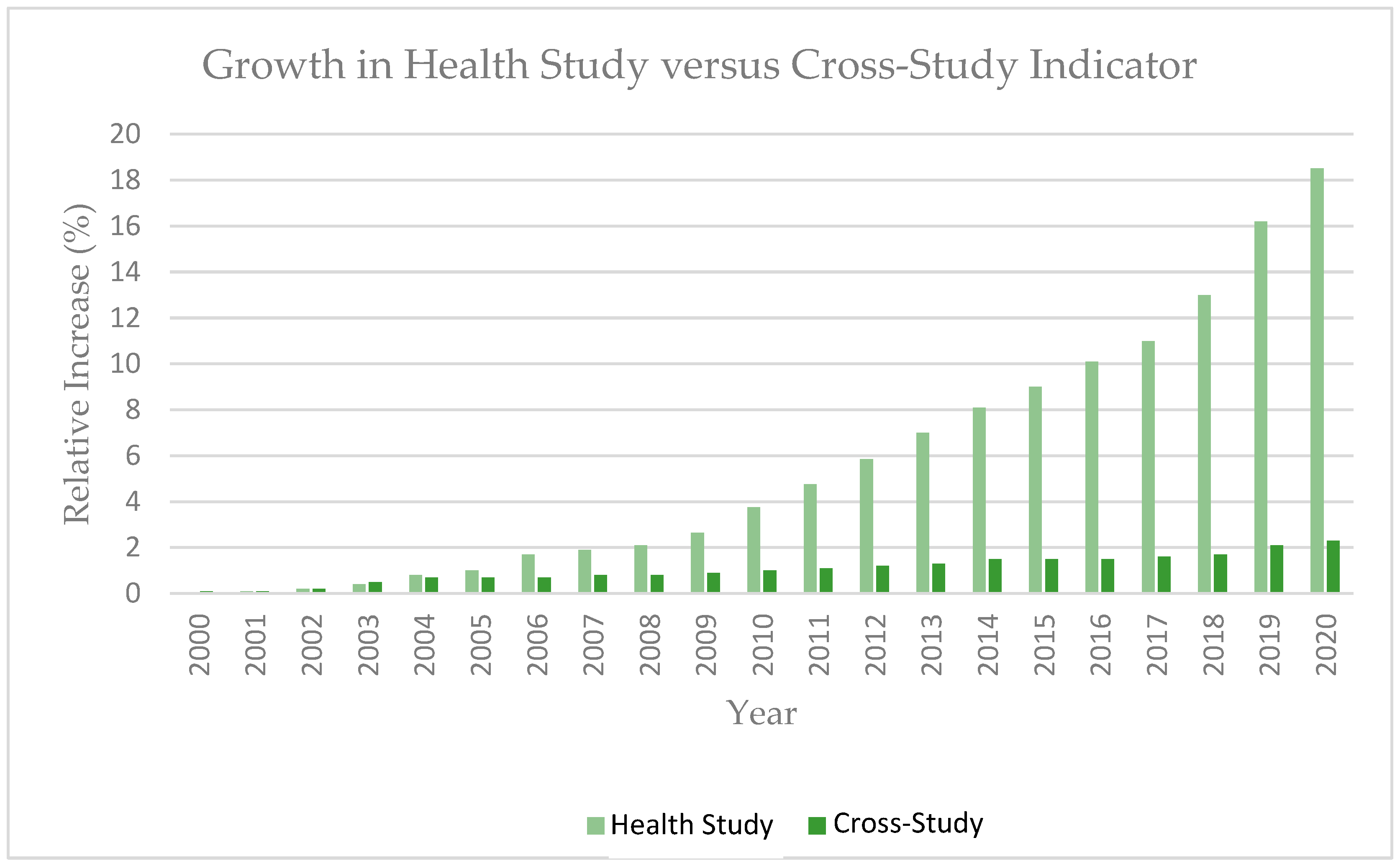
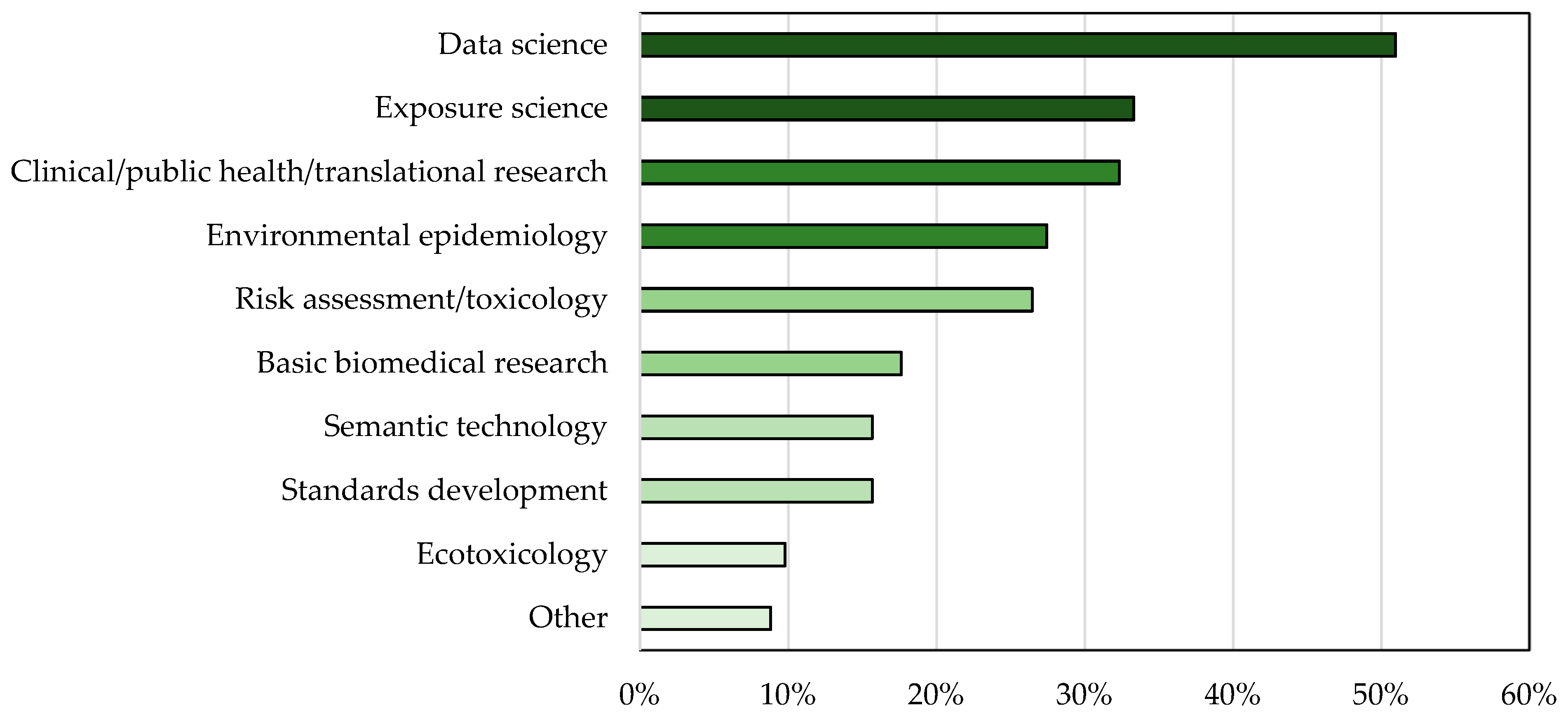
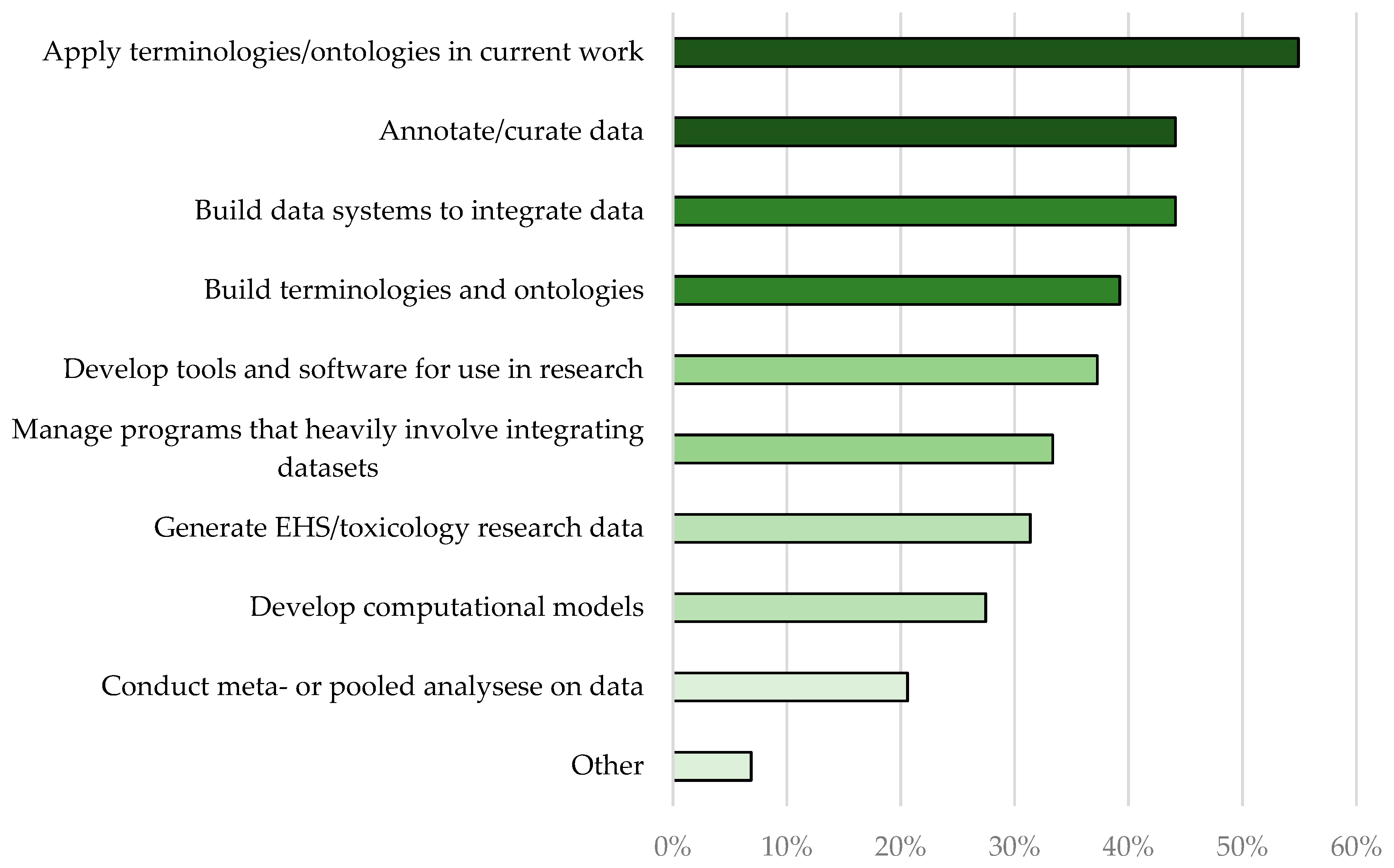
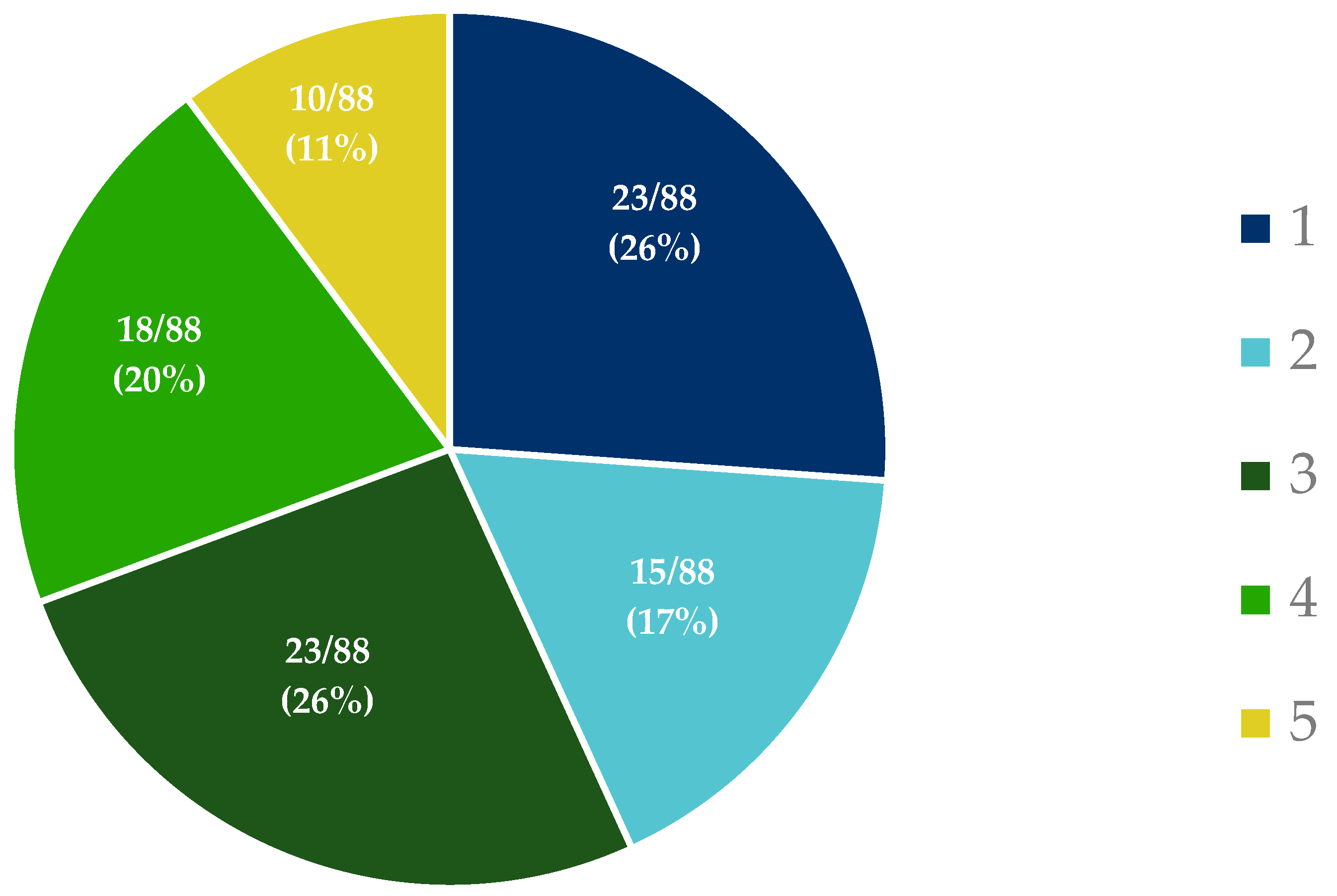
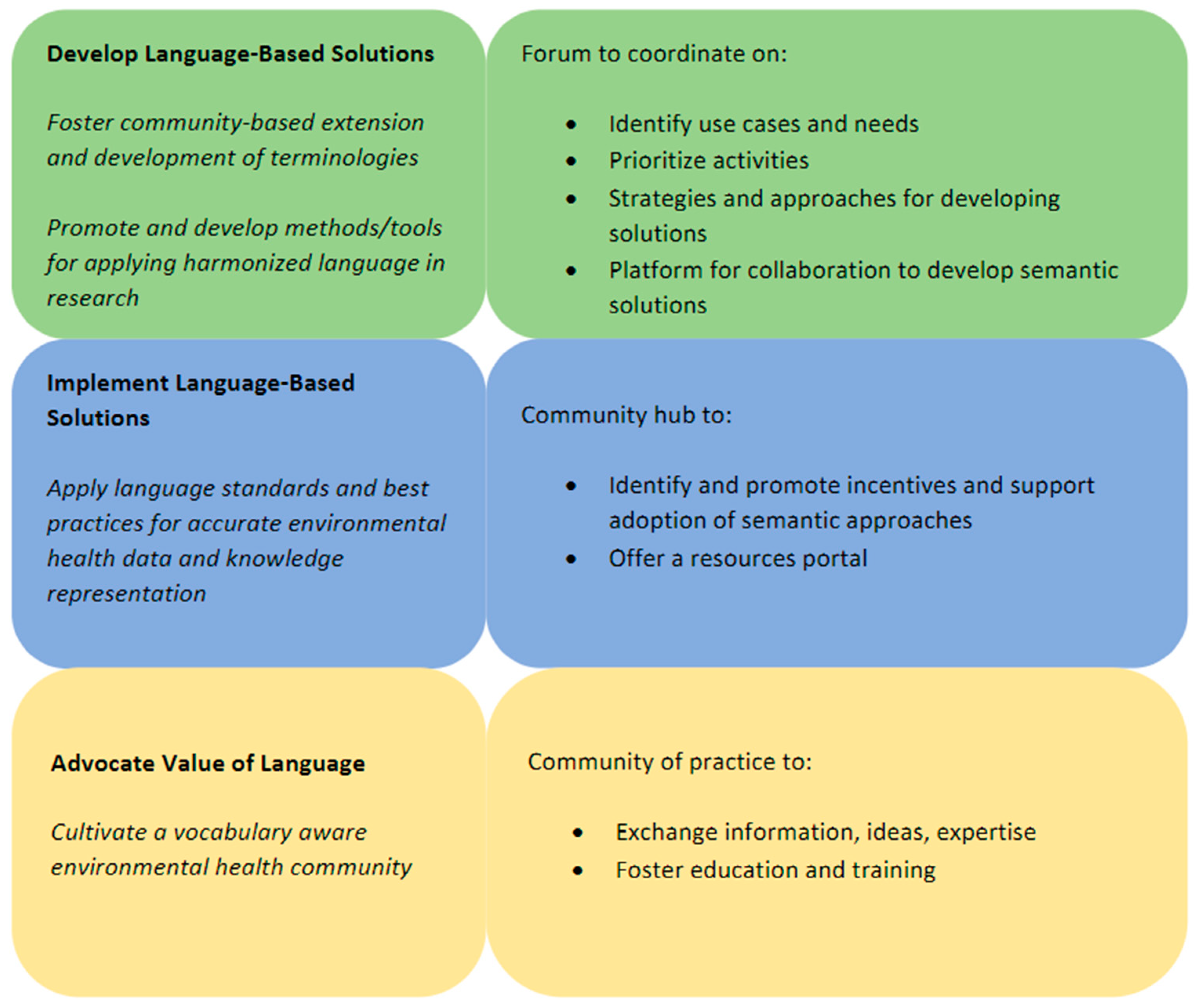
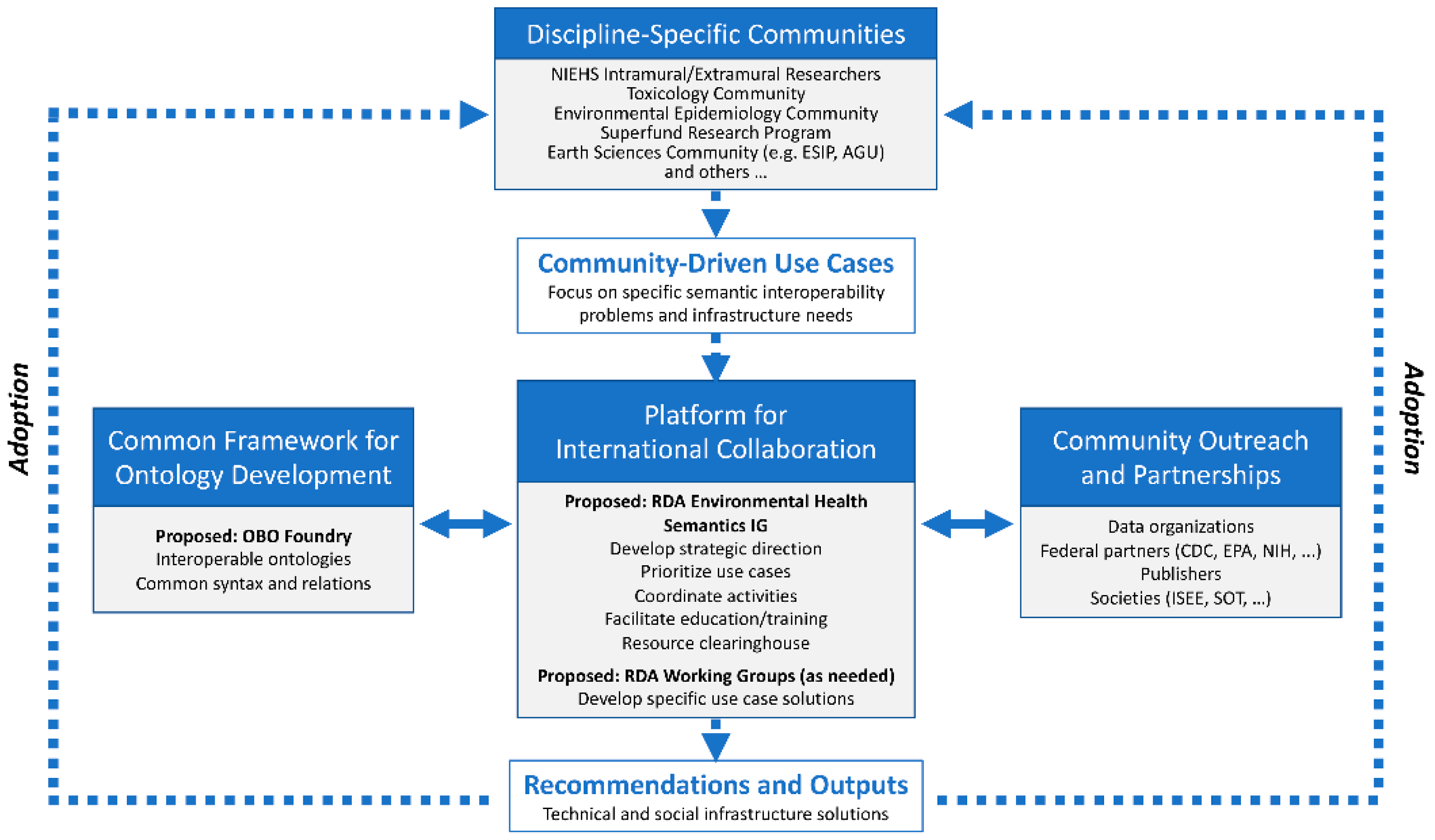
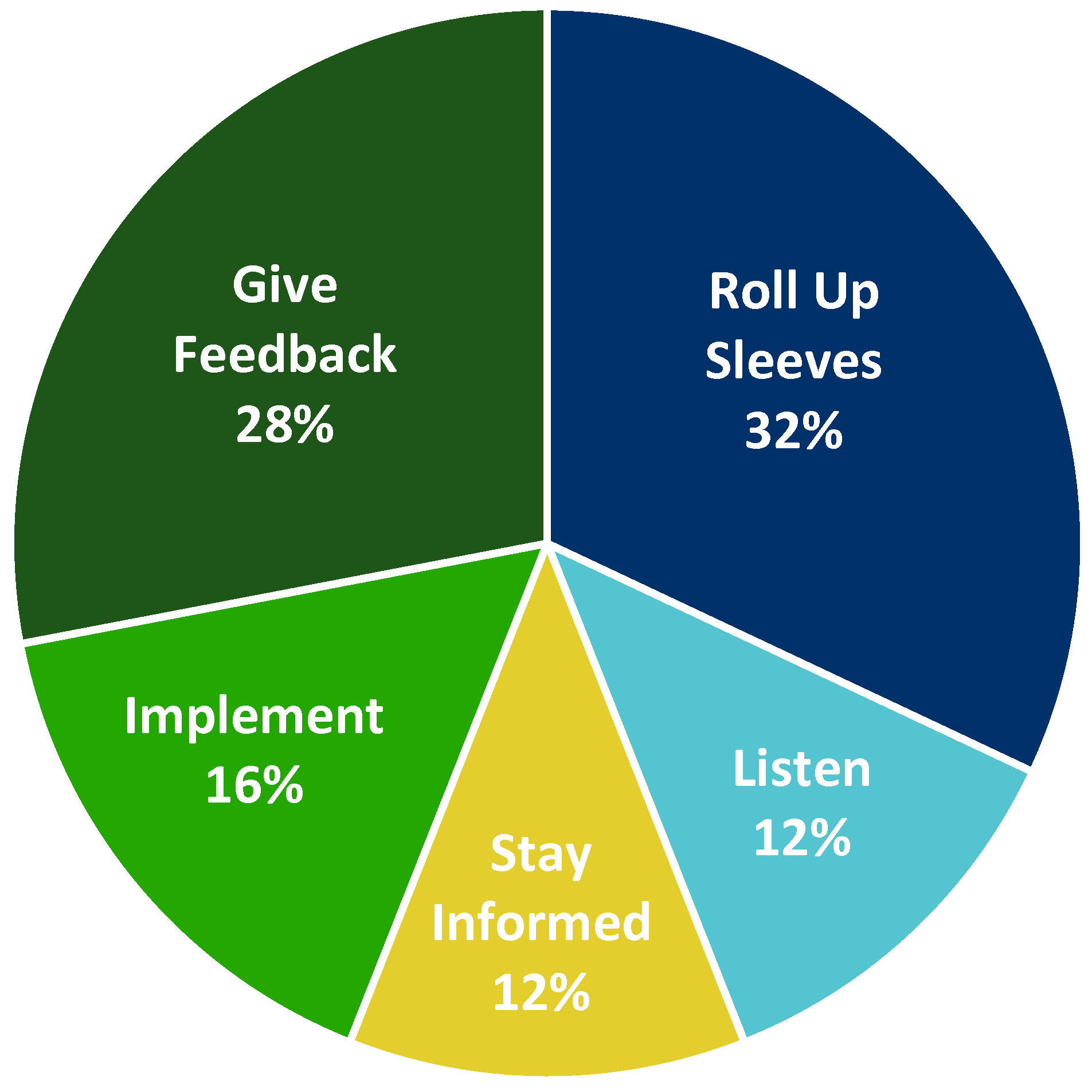
| Use Case | Use Case Title | Use Case Champion |
|---|---|---|
| Discovery of exposure data | What data exist for a given chemical/endpoint/exposure scenario? | Michelle Angrish, US EPA |
| Place-based exposures | Data and tools needed to harmonize place-based health research | Carmen Marsit, Emory University |
| Integration of exposure data | Combine individual-level data from multiple independent studies to understand how exposures X + Y impact health outcome Z | Jeanette Stingone, Columbia University |
| Bridging exposure and biomarkers of exposure | What are the biological processes and biomarkers associated with exposure and how do they relate to the potential for an adverse outcome associated with a given exposure? | Stephen Edwards, RTI and Chirag Patel, Harvard University |
|
|
|
|
|
|
|
|
| What gaps/pain points/challenges would you like to propose be worked on in the Collaborative? |
|
| What data/terminology standards and/or tools are you currently using for data query and aggregation? |
|
| Where do terminologies need to be harmonized? What terminology gaps exist? Which terminologies should be endorsed for EHS-related use? |
|
| 1 (Low) | 2 | 3 | 4 | 5 (High) | |
|---|---|---|---|---|---|
| Vision | - | 8% | 24% | 51% | 17% |
| Mission | 2% | 17% | 29% | 40% | 12% |
| Strategic goals | 5% | 8% | 26% | 53% | 9% |
| EHLC roles | - | 4% | 25% | 61% | 11% |
| What would you like to see the community work on/accomplish in the next 6–12 months? |
|
| How can the Collaborative support the creation of a more “vocabulary-aware” EHS research community? |
|
| What are the barriers to adoption? What can the Collaborative do to promote the adoption of harmonized language approaches? |
|
| How do we define success for the Collaborative? How can we measure it? |
|
Disclaimer/Publisher’s Note: The statements, opinions and data contained in all publications are solely those of the individual author(s) and contributor(s) and not of MDPI and/or the editor(s). MDPI and/or the editor(s) disclaim responsibility for any injury to people or property resulting from any ideas, methods, instructions or products referred to in the content. |
© 2023 by the authors. Licensee MDPI, Basel, Switzerland. This article is an open access article distributed under the terms and conditions of the Creative Commons Attribution (CC BY) license (https://creativecommons.org/licenses/by/4.0/).
Share and Cite
Holmgren, S.; Bell, S.M.; Wignall, J.; Duncan, C.G.; Kwok, R.K.; Cronk, R.; Osborn, K.; Black, S.; Thessen, A.; Schmitt, C. Workshop Report: Catalyzing Knowledge-Driven Discovery in Environmental Health Sciences through a Harmonized Language. Int. J. Environ. Res. Public Health 2023, 20, 2317. https://doi.org/10.3390/ijerph20032317
Holmgren S, Bell SM, Wignall J, Duncan CG, Kwok RK, Cronk R, Osborn K, Black S, Thessen A, Schmitt C. Workshop Report: Catalyzing Knowledge-Driven Discovery in Environmental Health Sciences through a Harmonized Language. International Journal of Environmental Research and Public Health. 2023; 20(3):2317. https://doi.org/10.3390/ijerph20032317
Chicago/Turabian StyleHolmgren, Stephanie, Shannon M. Bell, Jessica Wignall, Christopher G. Duncan, Richard K. Kwok, Ryan Cronk, Kimberly Osborn, Steven Black, Anne Thessen, and Charles Schmitt. 2023. "Workshop Report: Catalyzing Knowledge-Driven Discovery in Environmental Health Sciences through a Harmonized Language" International Journal of Environmental Research and Public Health 20, no. 3: 2317. https://doi.org/10.3390/ijerph20032317
APA StyleHolmgren, S., Bell, S. M., Wignall, J., Duncan, C. G., Kwok, R. K., Cronk, R., Osborn, K., Black, S., Thessen, A., & Schmitt, C. (2023). Workshop Report: Catalyzing Knowledge-Driven Discovery in Environmental Health Sciences through a Harmonized Language. International Journal of Environmental Research and Public Health, 20(3), 2317. https://doi.org/10.3390/ijerph20032317







